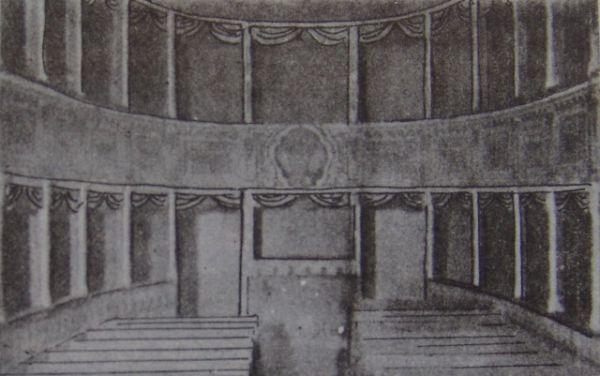
Slovenia has a long tradition of stage drama, but its oldest theater building isn’t in Ljubljana – it’s in the small mining town of Idrija, nestled among the hills of western Slovenia.
The theater was built in 1769 using building materials left over from the construction a nearby structure. Its final appearance came as a surprise even to officials in Vienna, who couldn’t believe that such a magnificent theater could have been built in a remote town. The building featured 17 theater boxes on the first floor and 19 on the second. It had enough space for an orchestra, a large stage, and an audience of 300. In fact, it was comparable to well-established theaters in large cities of the Hapsburg Empire – an impressive achievement for a town known mainly for mercury mining.
Significantly, it was Idrija’s mining heritage and wealth that helped to bring about the theater building in the first place. The town’s mercury mine was one of the largest in the world and it had made Idrija surprisingly cosmopolitan by importing some of the best and brightest from all over Europe to run the mining operations. Many of these new arrivals were hungry for culture and the theater proved to be an ideal pastime.
In fact, most of the plays staged early on were in German and Italian; they were performed by traveling theater troupes. There was little available in the Slovenian language, but that began to change in the second half of the 19th century. The Slovenian language began undergoing a revival at the time, and increasing numbers of Slovenian-language plays were soon performed in Idrija.
Soon, the theater became a nationally important institution; several plays that later became Slovenian classics were staged there. After 1889, the performances were almost exclusively in Slovenian, and the theater helped to assert the status of the Slovenian language in this part of Austria-Hungary.
In 1905, years of poor maintenance took their toll. Because of its deteriorating condition, the theater had to be closed and was subsequently turned into a warehouse. After World War II, it was even turned into a movie theater. Its external appearance remained unchanged, however, and it was later protected as a national monument. Even though the old theater is now recognized by UNESCO as part of Idrija’s mining heritage, it’s still awaiting a full restoration that would return it to its glory days, when it played such an important role both for the town of Idrija and the culture of Slovenia.


































































